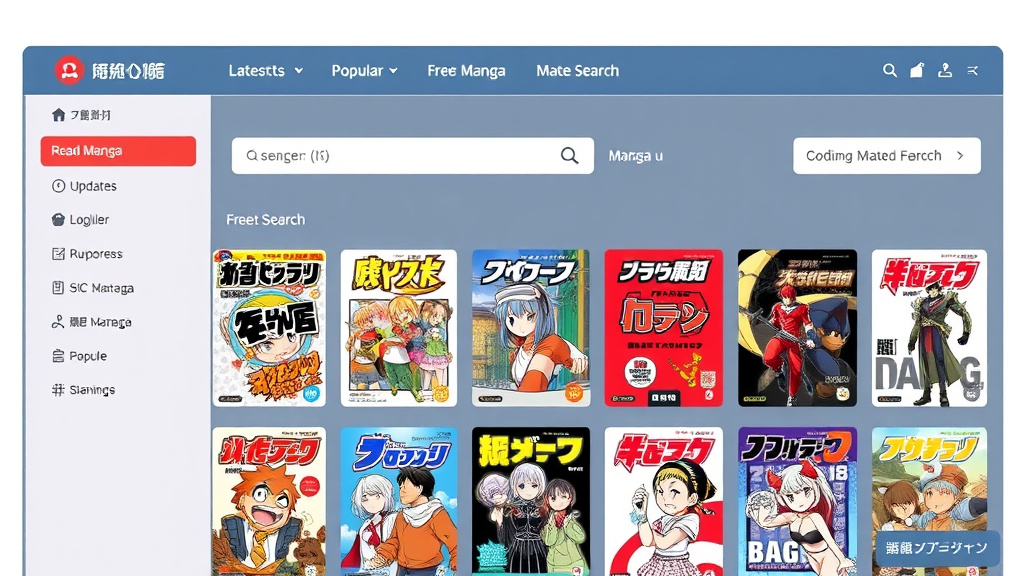The history of manga is a remarkable journey through time, reflecting Japan’s cultural transformations, artistic innovations, and societal shifts. From ancient scrolls to global multimedia phenomena, manga has evolved into a powerful storyteller with a profound influence beyond its borders. Understanding this history allows us to appreciate not just the art form itself but also its intertwined relationship with Japanese identity, technological advancements, and global cultural exchanges. In this comprehensive exploration, we will trace the origins, evolution, key figures, artistic styles, cultural impacts, and future directions of manga, revealing how it became one of the world's most beloved literary and visual traditions.
The Genesis of Manga: Pre-War Origins and Early Influences
The history of manga begins long before the term was coined or the modern comic culture flourished. Its roots stretch back to ancient Japan, where visual storytelling existed in forms such as emakimono—painted handscrolls that depicted narratives through sequential art. These early works, like the famous Tale of Genji illustrations and later religious and satirical sketches, paved the way for a rich visual storytelling tradition. During the Edo period (1603-1868), ukiyo-e prints flourished, capturing fleeting moments of pleasure and urban life, influencing later comic strips by emphasizing bold lines and expressive characters.
In the late 19th and early 20th centuries, Western printing technology and art, notably ventriloquism and caricature, profoundly impacted Japanese artists. The influx of Western comics and cartoons, combined with Japan's own traditional visual storytelling, created a fertile ground for manga's emergence. Artists such as Rakuten Kitazawa and Osamu Tezuka in the early 20th century began experimenting with comic strips in newspapers, blending humor, satire, and social commentary. These early publications cultivated a burgeoning interest in illustrated narratives, setting the stage for manga’s post-war explosion.
 Hình minh họa: history of manga – read free manga sites
Hình minh họa: history of manga – read free manga sitesPost-War Revolution: The Rise of Tezuka and the "Story Manga" Era
The aftermath of World War II marked a pivotal turning point in the history of manga as a distinct art form. Osamu Tezuka, often called the "God of Manga," revolutionized the industry with his innovative storytelling, cinematic panel layouts, and complex characters. His landmark work Astro Boy (Tetsuwan Atom), released in the early 1950s, transformed manga from simple gag strips to layered narratives capable of exploring profound themes such as ethics, identity, and societal responsibilities. Tezuka’s approach pioneered what would be called story manga, emphasizing comprehensive storytelling over humor or gag-based comics.
The post-war era also saw manga becoming more accessible to a broad audience, transcending age and gender boundaries. The rise of manga magazines targeting specific demographics allowed creators to experiment with genres and topics, fostering diversity. This era laid the groundwork for manga’s cultural legitimacy, elevating it from merely popular entertainment to a respected art form capable of addressing complex social issues. It was during this time that manga started reflecting Japan’s rapid modernization and grappling with new societal realities, thereby strengthening its cultural resonance.

The Golden Age of Manga: Shonen, Shojo, and the Diversification of Genres
The 1960s and 1970s are often regarded as the golden age of manga, characterized by prolific creativity and genre diversification. Shonen manga targeting young boys, such as Dragon Ball and Kinnikuman, exploded in popularity, emphasizing action, adventure, and humor infused with themes of perseverance and friendship. Shojo manga aimed at young girls, with titles like Ribbon no Kishi and later Sailor Moon, explored romance, personal growth, and fantasy, often featuring beautiful artwork and emotionally driven stories. Meanwhile, adult manga, or seinen and josei, expanded topics to include politics, social issues, and mature themes, broadening manga’s demographic reach.
This era also saw the emergence of iconic manga artists like Rumiko Takahashi, Leiji Matsumoto, and Moebius (though European, influenced many Japanese artists), who pushed artistic boundaries and storytelling techniques. The diversification of genres and increasing sophistication of art styles reflected Japan’s societal shifts—teenagers seeking identity, women gaining independence, and adults craving nuanced narratives. Manga became a mirror of Japan’s dynamic cultural landscape, evolving from simple entertainment to an influential art form capable of expressing complex human experiences and social commentary.
Manga in the Digital Age: New Platforms and Evolving Storytelling
As the 21st century dawned, technological advancements radically transformed the history of manga. The rise of the internet, smartphones, and digital publishing platforms fundamentally altered how manga is created, distributed, and consumed. Web manga—created and shared online—democratized content creation, enabling amateurs and professionals alike to reach global audiences instantly. Platforms like Pixiv, LINE Manga, and ComiXology allow readers to access immense libraries of manga anytime, anywhere, breaking geographical and financial barriers.
Apart from distribution, storytelling itself has evolved with digital tools. Artists now experiment with multimedia elements, enhanced visual effects, and interactive storytelling techniques that weren’t possible with traditional print. This digitization not only expanded manga’s reach but also encouraged innovative formats such as vertical scrolling comics and animated manga adaptations. The digital age has invigorated the industry, fostering a new generation of artists and writers motivated by diverse stylistic influences and technological possibilities, ensuring that manga remains vibrant and relevant in an ever-evolving cultural landscape.
Key Figures and Iconic Works: Architects of Manga's Legacy
Throughout its vibrant history, certain individuals and works have indelibly shaped manga’s trajectory. Osamu Tezuka’s visionary approach set the blueprint for narrative depth and cinematic panel design. Rumiko Takahashi’s Ranma ½ and Inuyasha exemplified comedic storytelling paired with appealing art, influencing countless artists. Likewise, Shotaro Ishinomori’s Kamen Rider franchise pushed manga into multimedia spaces, exemplifying creative expansion beyond print.
Iconic works such as Akira by Katsuhiro Otomo, which blends cyberpunk aesthetics with social commentary, and Naruto by Masashi Kishimoto, with its epic storytelling of perseverance and friendship, have become cultural phenomena worldwide. These creators and their groundbreaking works have cemented manga’s legacy as a major cultural and artistic force. Their influence continues as newer voices emerge, pushing boundaries and inspiring global fandoms, demonstrating manga's power as both personal expression and mass entertainment.
The Evolution of Manga Art Styles and Artistic Techniques
The artistic evolution within manga is a testament to its dynamic and adaptive nature. Early manga artwork favored simple, exaggerated features and bold lines, designed for quick reading and mass appeal. Over time, as artists gained confidence and refined their skills, complex shading, detailed backgrounds, and expressive character designs became standard. Techniques such as speed lines, mise-en-scène in panel layouts, and digital coloring have added depth and texture to storytelling, making manga more immersive.
This evolution also reflects cultural shifts—ranging from the stylized, the grotesque, the elegant, to the hyper-realistic—mirroring societal standards, technological benefits, and personal artistic expressions. Artists now blend traditional techniques with digital tools, creating highly polished works that push aesthetic boundaries. The ongoing evolution of art styles symbolizes manga’s resilience and openness to experimentation, ensuring the medium continues to innovate artistically while maintaining its cultural relevance.
Social and Cultural Impact: Manga's Influence on Japanese Society and Beyond
Manga is more than entertainment; it’s a mirror and molder of societal values. It has played a significant role in shaping Japanese youth culture, influencing fashion, speech, and social behavior. Manga has often addressed social issues such as war, gender roles, environmental concerns, and political discourse, fostering conversation and reflection among its readership. Titles like Barefoot Gen and Akira depict Japan's history and future anxieties, contributing to collective memory and national identity.
Beyond Japan, manga's cultural impact is global. It introduced Western audiences to Japanese visual language and storytelling, fostering cross-cultural understanding and exchange. Manga conventions abroad, fan translations, and international collaborations demonstrate its reach. Its influence also extends into other media—anime, video games, fashion, and even politics—highlighting manga’s role as a cultural ambassador that bridges generations and borders through shared stories, societal commentary, and artistic innovation.
Internationalization of Manga: Global Reach and Cultural Exchange
The internationalization of manga exemplifies its universal appeal and cultural exchange potential. Once regarded primarily as Japanese entertainment, manga now has dedicated fanbases worldwide, with translations available in dozens of languages. This global spread has facilitated cultural dialogues—Japanese themes, customs, and storytelling styles are embraced and adapted by artists worldwide, fueling a creative exchange that benefits both sides.
Manga’s international success has influenced the publishing landscape, leading to collaborations with Western studios, adaptations into Hollywood films, and the rise of global manga artists. Conversely, international artists incorporate manga-inspired elements into their own work, blurring cultural boundaries. This exchange enriches cultural understanding while ensuring manga remains a vibrant, evolving art form rooted in deep tradition yet connected to a global community.
The Business of Manga: Publishing, Merchandising, and the Industry Landscape
The commercial machinery driving manga’s success is complex and multi-layered. Japan’s publishing industry has established a vast ecosystem of magazines, tankoubon (volumes), anime adaptations, and merchandise, transforming manga into an economic powerhouse. Major publishers like Shueisha and Kodansha wield significant influence, and their strategic marketing, licensing deals, and adaptation pipelines ensure manga’s constant presence in consumer markets.
The industry also faces challenges—piracy, market saturation, and shifting consumer behaviors—necessitating innovative business models like crowdfunding, live-streaming, and cross-media franchises. Merchandising, from figures to fashion, extends manga’s reach beyond pages and screens, creating a merchandising ecosystem that sustains creators and publishers alike. As the industry adapts to technological and global trends, the business of manga continues to be a vital driver of cultural production, ensuring its sustainability and relevance for future generations.
The Future of Manga: Emerging Trends and Anticipated Developments
Looking ahead, the future of manga promises exciting developments driven by technological innovation, changing societal dynamics, and cultural diversity. Virtual reality (VR) and augmented reality (AR) are beginning to integrate with comics, offering immersive story experiences. Artificial intelligence (AI) may assist artists with creation, editing, and translation, fostering more inclusive and diverse voices in manga production.
Moreover, manga’s genre boundaries will continue to expand, blending with other media such as video games and interactive narratives. Cultural representation and global storytelling are likely to become more prominent, reflecting a truly interconnected world. As manga continues to evolve, its ability to adapt while maintaining core storytelling traditions will determine how it remains a vital cultural force—an art form that learns from its rich past while boldly shaping its future.
## Conclusion
The history of manga reveals an extraordinary journey from ancient visual storytelling to a global entertainment phenomenon. It embodies Japan’s cultural shifts, artistic innovation, societal reflections, and technological advancements over centuries. From early scrolls and ukiyo-e to Tezuka’s revolutionary storytelling, the diversification of genres during its golden age, and its adaptation to the digital age, manga’s evolution demonstrates resilience and creativity. Its influence extends beyond Japan, shaping global popular culture while reflecting universal themes. As it embraces emerging technologies, diverse storytelling avenues, and international collaboration, manga’s future remains bright, promising continued innovation, cultural exchange, and artistic excellence that will captivate generations to come.





